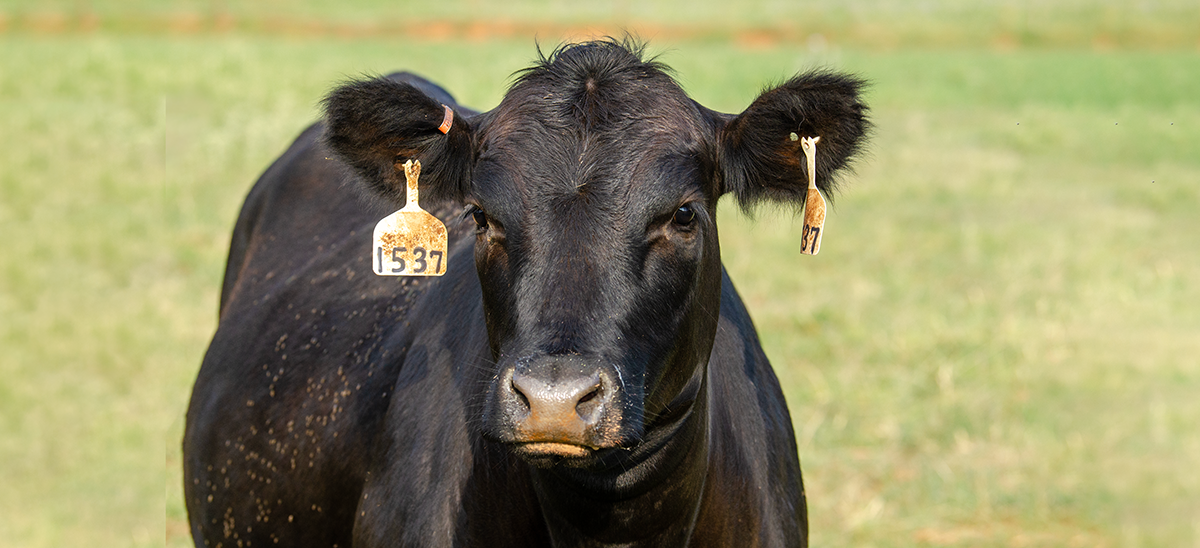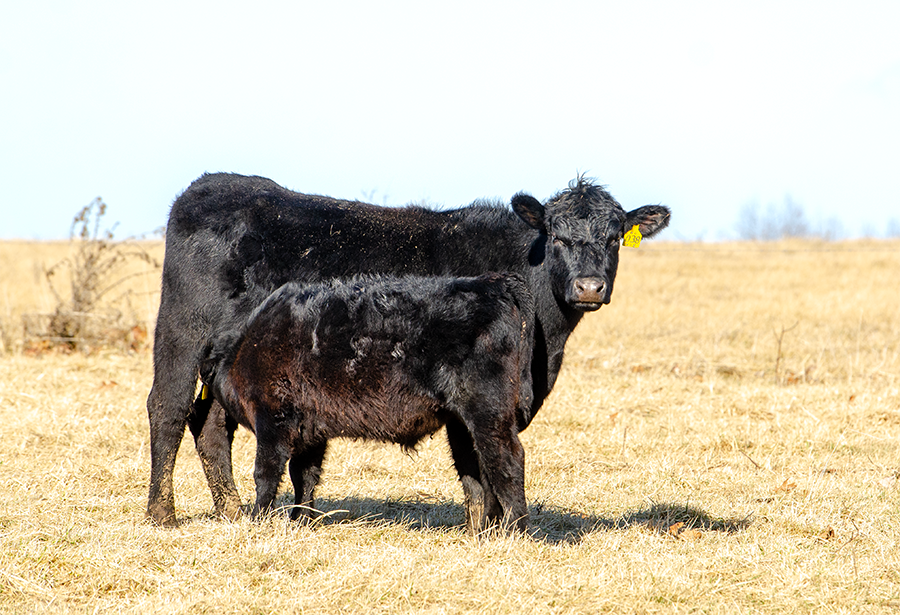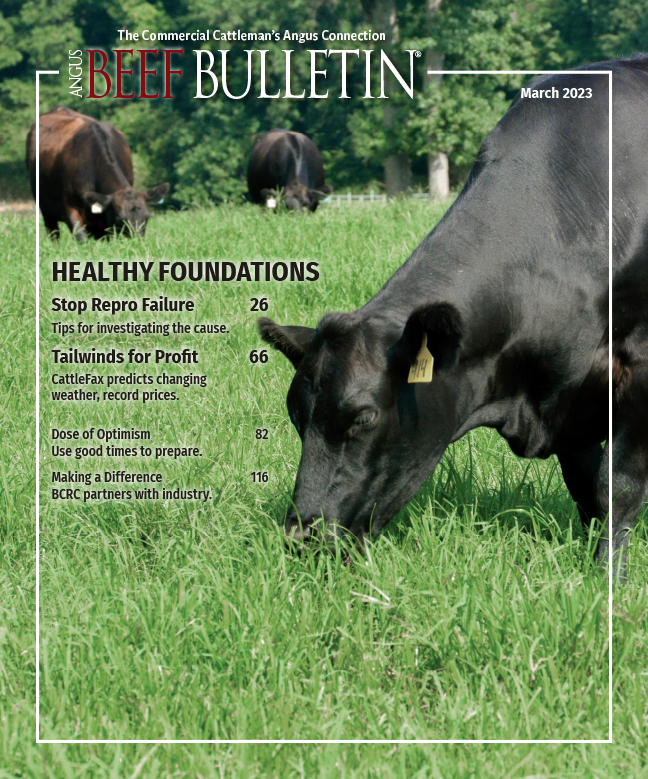
Tips for Rebreeding Success With First-Calvers
Only keep heifers that conceive the first time for the most profitable cow herd.
The 2-year-old year is the toughest time of a cow’s life. She’s nursing her first calf, still growing and needs enough nutrition/body condition to cycle again after calving. It can be a challenge to get these first-calf cows rebred without losing ground in their calving schedule.

Getting first-calf heifers rebred after calving may be less about management and more about genetics. [Photo by Shauna Hermel] |
A 2-year-old is generally the most valuable and the most expensive animal in the herd. She has not yet generated income as her first calf has not yet been sold, but money has been invested to raise or purchase her. If she fails to stay in the herd, this is a big loss. It’s better to invest more management to get her rebred than start over with another heifer.
Jordan Thomas, assistant professor and beef reproduction specialist at the University of Missouri, says reproductive performance is partly a function of how we manage that heifer after calving.
“Producers usually do a good job with that part. In my experience, what we need to work on improving is heifer selection,” he says.
You need heifers that breed quickly the first time to rebreed quickly after their first calf.
“People tend to keep the biggest, prettiest heifers, develop and breed them, and keep everything that conceives,” says Thomas. “What we need to do, however, is use a very short breeding season on heifers, or do pregnancy diagnosis early enough that we can just keep the ones that bred on their first cycle and market the others as bred heifers.”
Many people keep heifers from their best cows that always breed early. There is some logic to that, but the most important thing is the heifer herself, says Thomas. “If she conceives even just one or two cycles later, this sets her up to be open the next year or potentially behind for the rest of her life.”
U.S. Meat Animal Research Center (USMARC) data show breed-back performance as a function of when the heifers conceived in their first year, notes Thomas. A heifer that conceived within the first 21 days tends to be more productive and more profitable. She stays in the herd longer and weans more calves, while costing less.
Heifers are similar to a depreciable asset like a pickup. The longer that asset can be depreciated, the cheaper it actually is every year, Thomas explains. If she stays in the herd longer, she’s a better asset. She not only weans more total calves during her lifetime, she weans heavier calves because they are born earlier in the season.
Make sure heifers are adequately developed at the time of calving. You don’t want them fat, but they do need some extra condition. A body condition score (BCS) of 6 gives heifers some cushion when they lose weight after calving. Depending on their genetics for milk production, their first lactation can really pull them down.
Another factor is calving season. If they are calving at a time of year when they must be heavily supplemented, it’s a tougher economic challenge to meet their nutritional requirements.
“If there’s no green grass, you’ll have a higher feed bill to meet those needs, so there has to be some value somewhere else in your program to offset that cost,” he says. That value might be calving early in a purebred herd to have bull calves old enough to go through a sale as yearlings. In a commercial herd in range country, it might mean the value of having those heifers bred to selected bulls (for easy calving and for the genetics you want) before they go to range pastures where you have no control over what they might be bred to.
“If first-calf heifers are being supplemented, they also need access to feed where they don’t have to compete with mature cows,” says Thomas.
Editor’s note: Heather Smith Thomas is a freelance writer and cattlewoman from Salmon, Idaho. [Lead photo by Lyndsey Sawin.]



